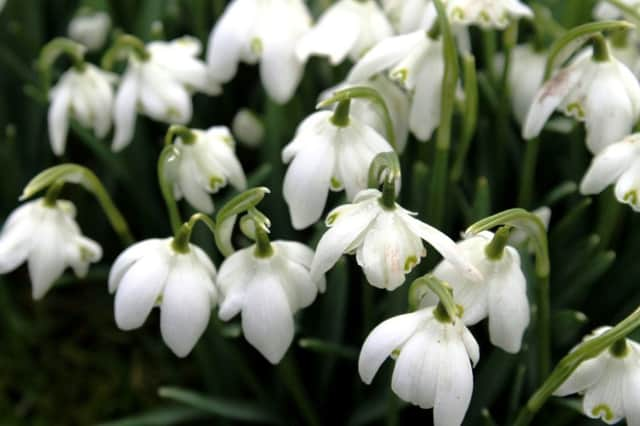Braving the winter


Or perhaps it is shy, so shy that it forsook the chance to enjoy the warmth of the summer sun; instead, it learned to bloom in winter.
But despite all this, it became the darling of the people who have come to regard it as the harbinger of spring.
Advertisement
Hide AdAdvertisement
Hide AdThe humble snowdrop paves the way for the more colourful and larger spring bulbs like daffodils and tulips. It may be smaller but it is much-loved by all.
But unlike its bigger spring brethren, it is forgotten as soon as its flowering days are over. Whereas tall flowers leave behind the problem of tatty foliage, the snowdrop (Galanthus) becomes inconspicuous after the last flower fades, and is so often tucked away in corners and beneath shrubs and trees, that it becomes an instant, distant memory.
The thoughtful gardener will, however, never forget anything which can put on a brave face when winter is doing her worst. And in a few weeks, that same thoughtful gardener may well be preparing to plant even more snowdrops.
Clumps of Galanthus bulbs, lifted and planted immediately after they have finished flowering, will fare far better than the wrinkled, dry bulbs offered for sale in autumn. Those sad apologies for a splendid spring flower take time to acclimatise, whereas bulbs planted in March will carry on as though nothing has disturbed them.
For that reason, many gardeners watch until the final flower has bloomed, then dash out, lift and divide clumps, and replant them. It’s a cheap, easy way of propagating the species.